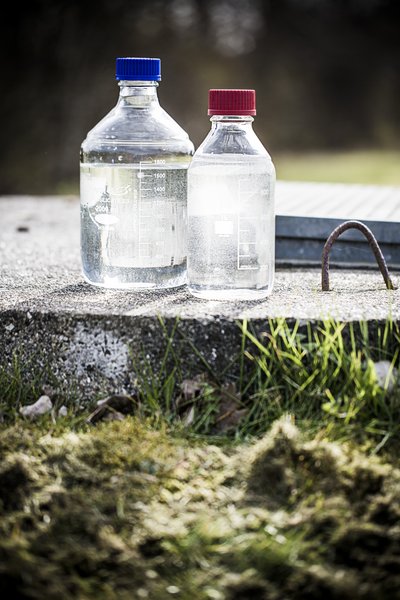New report from the Pesticide Leaching Alert System (VAP) focuses on the period 2016-2018
The new VAP report focuses on the period from July 2016 to June 2018, when 18 pesticides were sprayed to test the leaching of one or more degradation products. For six of the pesticides, the leaching of the pesticide itself was also investigated.

In the 1990s, a nationwide groundwater monitoring program (GRUMO) recorded a worrying increase in the number of pesticide findings in groundwater. On this background, the Danish Parliament launched in 1998 the Danish Alert System for Leaching of Pesticides to Groundwater (VAP), and it has now been in operation for 20 years.
VAP consists of a variety of fields that are conventionally grown and sprayed with selected approved pesticides at maximum permissible dosages. Next, it is examined whether the pesticides and/or selected degradation products are leached to groundwater, drainage or groundwater below the fields.
A total of six pesticides and 25 decomposition products were investigated in the period 2016-2018. During the period, one pesticide and 18 decomposition products were found neither in groundwater nor in water from sinks and suction cells at a depth of one meter. One pesticide and two degradation products were found only in water from a meters depth. Twenty-two of the substances were not found in the groundwater after spraying, while nine substances were detected in the groundwater, one of which exceeded the allowed value. This substance was the degradation product 1,2,4-triazole from azoles found to varying degrees in the groundwater below the fields. Azoles are a family of chemical compounds, some of which have a biological effect on fungi and are therefore used as active substances in fungicides. In four of the six fields, the requirement value was exceeded in some of the measurements.
The results from one of the fractured clay fields showed that 1,2,4-triazole leaches through the soil and down to the groundwater as a pulse transiently exceeding 0.1 µg / L after azole applications in the field. Azoles were supplied here both with stained seed and by spraying. It was not possible to assess which infusion caused the leaching of 1,2,4-triazole.
After sowing the azole stained seed on another cracked clay field, the first analysis results showed an increase in the 1,2,4-triazole concentration in the groundwater. The results from the two fractured clay fields showed for the first time a possible association between the use of azoles in the field and the discovery of 1,2,4-triazole in the groundwater.
Since the monitoring of 1,2,4-triazole started in 2014, it has not been possible in the past to relate findings in groundwater with specific, contemporary use of azoles in the fields. This is because 1,2,4-triazole was found at relatively high concentrations in the soil water below two of the fields as well as in groundwater taken upstream of the field prior to testing a specific azole application on the field itself. This high level of concentration may be due to the fact that azole agents have been used repeatedly in all the VAP fields since VAP started in 1999 and most likely also in the neighboring fields.
The results indicate that there is a pool of azoles bound in the plow layer which is slowly released and degraded to 1,2,4-triazole. This is currently being investigated in a research project funded by the Danish Environmental Protection Agency.
Read the summary and report here
VAP is funded through Pesticide Strategy 2017-2021. The results of the VAP for the period 1999-2018 are described in a report series prepared by the National Geological Survey for Denmark and Greenland (GEUS) together with the Department of Agroecology and the Department of Bioscience at Aarhus University.
Read the full report 'Danish Pesticide Leaching Assessment Program: Monitoring Results May 1999 - June 2018'.
VAP reports from all years can be found here. http://pesticidvarsling.dk/
Contact
Project Manager and Senior Scientist Annette E. Rosenbom, The National Geological Survey for Denmark and Greenland (GEUS). Tel: 91333552. Email: aer@geus.dk
Academic employee Preben Olsen, Department of Agroecology, Aarhus University. Tel. 21730711. Email: preben.olsen@agro.au.dk
